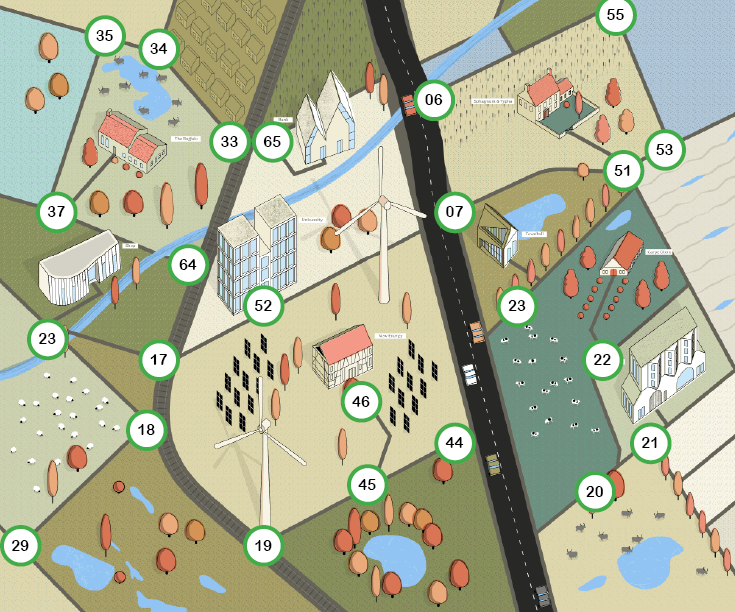Cycle route History and Culture in Peatland
Length | 37.83 km
Theme | historical
Kcal | 738
Bike | 2 hours 36 minutes
E-bike | 2 hours 4 minutes
Introduction to the cycle route History and Culture in Peatland
What moved people to visit this delta? It was a wasteland, which long before our era consisted of swamps, primeval forests and undergrowth on a thick layer of peat, which absorbed the water like a sponge. Nevertheless, the catchment area offered plenty of opportunities. The first people to visit the region about 10,000 years ago were hunters and gatherers. They were wanderers who hunted game and fish with their families, or collected edible fruits and plants. Permanent habitation was almost impossible at that time because the area was regularly flooded by rainfall and flooding of the Abhainn Dearg and the Abhainn Dubh.
The first permanent residents were farmers and fishermen, but there will not have been many. They settled here intermittently during the Early Bronze Age and the Early Iron Age (around 2100-600 BC). They built their simple huts and dwellings on the low river dunes, which were formed by the wind for thousands of years. Agriculture in this early period was very small-scale and focused on self-sufficiency. But the proximity to Abhainn Dubh guaranteed fishermen ample catches of eels, carp, perch, pike and other freshwater fish. For a long time, the catchment area of the Abhainn Dubh remained very sparsely populated.
The chances of a reasonable existence improved when around 500-750 AD the Abhainn Dearg and the Eskanmere brought fertile clay, making the land more suitable for agriculture. After 800, the first residential areas of Gennmouth and Hazeltown probably arose on banks and river dunes. Blacklock did not need such an elevation in the landscape. The first “Lockers” lived directly behind the dike after the diking of Abhainn Dubh.
With a rising population, the increase of agricultural tools and the accumulation of expertise and sharing of knowledge with the printing press, Abhainn Dubh was no longer only important for fishing. The river grew into an important transit route for agricultural traders and skippers. Many fishermen, sailmakers and shipbuilders lost their jobs over the centuries replacing livelihoods with agricultural land use. Nevertheless, Abhainn Dubh remained important, if only as a magnet for the increasingly extensive (water) tourism.
